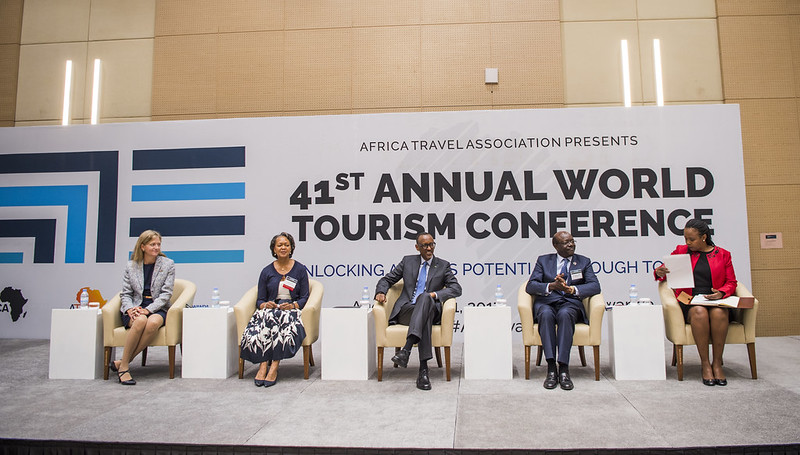Community-Based Tourism Alleviating Poverty in Rwanda
 Rwanda is a landlocked country located in the Great Rift Valley of Central Africa. Known as the “land of a thousand hills,” it is renowned for its unique biodiversity and natural beauty, making it an increasingly popular tourist destination. However, despite making significant progress developmentally and economically since the 1994 Genocide, approximately 49% of Rwandans still live below the poverty line, with 92% of them living in rural areas.
Rwanda is a landlocked country located in the Great Rift Valley of Central Africa. Known as the “land of a thousand hills,” it is renowned for its unique biodiversity and natural beauty, making it an increasingly popular tourist destination. However, despite making significant progress developmentally and economically since the 1994 Genocide, approximately 49% of Rwandans still live below the poverty line, with 92% of them living in rural areas.
This positions the nation as having one of the highest poverty rates in Africa. However, with tourism now the most significant and fastest-growing industry globally, the Rwandan government is turning to new ways to address poverty. Specifically, as part of substantial policies to promote tourism, such as its flagship “Visit Rwanda,” the government has sought to create jobs that protect the country’s biodiversity and simultaneously provide significant social and economic opportunities. This is known as Community-Based Tourism (CBT). While CBT can be effective, it has its issues.
What Is CBT and How Does It Alleviate Poverty?
To understand how Community-Based Tourism is relieving poverty in Rwanda, it is helpful to see how tourism benefits the country more broadly. For many developing countries like Rwanda, tourism is a great way to attract investment to create jobs, which, as of 2019, brought in an estimated $408 million and provided 142,000 workers with employment.
However, with most jobs in the tourism sector located in urban areas, without carefully targeted policies aimed at those living in rural areas, tourism benefits won’t effectively help reduce poverty. One solution to this problem, however, is CBT. CBT provides local communities with economic opportunities centered around their environment, culture and traditions. Not only does this reduce poverty, it is also intended to accommodate any contingent needs the community or individuals in the community might have. In countries like Rwanda, which are heavily dependent on the natural environment as an attraction for tourism, providing communities with economic opportunities that respect their traditions and the natural environment is vital.
What Are the Issues With CBT?
As pointed out by many scholars, a central facet that contributes to the success of Community-Based Tourism is the concept of community ownership and their effective engagement in the decision-making processes of these programs. Policies will build trust and improve service delivery by ensuring that communities are involved in decision-making. This enhances tourism’s economic benefits and provides vital knowledge on how tourism benefits vulnerable groups like women and children and looks after the environment.
For example, without effective community engagement, farmers may miss learning about new agricultural techniques and how they can benefit them. This might prevent them from improving their yields, generating a better income and sustaining the country’s natural biodiversity. CBT policies will then have little effect on reducing poverty and encouraging tourism.
What Is Being Done to Remedy These Issues in Rwanda?
In Rwanda, however, several organizations are operating to address these issues. Volcano’s National Park, one of many national parks, has nongovernmental organizations (NGOs) working with the government. They aim to implement projects that ensure communities are effectively engaged in the decision-making process and to help communities fully reap the benefits of the tourism boom.
In particular, an African NGO, Red Rocks, has been active. It advocates not only for the Rwandan government to include local communities in decision-making processes but also for the implementation of training and skills development programs. These programs provide much-needed knowledge on building economic resilience while conserving the park’s precious natural resources. For example, one of its key pillars has been prioritizing youth and women’s programs that teach organic agricultural practices that reduce costs, increase yields and preserve biodiversity.
According to the United Nations Development Programme (UNDP), the success of these programs has been significant as livelihoods have been improved and communities have received resources that better fit their contingent needs. This issue is especially pertinent for traditionally marginalized groups like women and children. The park’s story, therefore, highlights the transformative potential of CBT when it functions as intended, underlining that it needs to be focused on people just as much as the environment.
Conclusion
Rwanda has done well in marketing itself as a global tourism destination. Policies that promote tourism need to remain people-focused, especially for those living in poverty. CBT schemes have been shown to work better when participating communities are fully incorporated in the decision-making process. This will allow the necessary resources to reach those who need it most.
– Cameron Mason
Photo: Flickr
